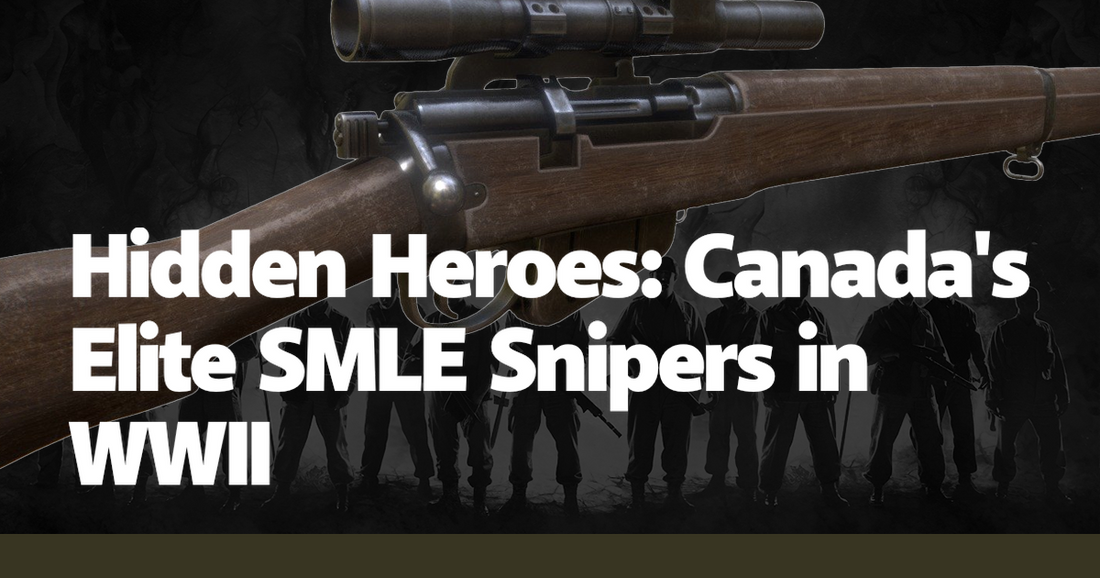In the annals of World War II, the narrative often gravitates towards the thunderous artillery, the armored divisions, and the infantry charges that defined the era. Yet, within the cacophony of battle, there existed a cadre of silent warriors whose contributions were as pivotal as they were unheralded: Canada's elite SMLE snipers. Armed with the Short Magazine Lee-Enfield (SMLE) rifle, these marksmen epitomized precision and patience, their exploits etched into the fabric of military history through acts of unparalleled bravery and skill.
The SMLE rifle, a staple of the British Commonwealth forces, was renowned for its reliability and accuracy. For Canadian snipers, the SMLE was more than a weapon; it was an extension of their very being. The rifle's bolt-action mechanism allowed for rapid firing, a crucial advantage in the fluid and unpredictable theater of war. Canadian snipers, often operating in pairs with a spotter, utilized the SMLE to devastating effect, their targets unaware of the lethal gaze fixed upon them from hundreds of meters away. The SMLE's robustness in adverse conditions—mud, rain, and snow—further cemented its status as the sniper's weapon of choice.
One of the most storied Canadian snipers was Corporal Francis Pegahmagabow, an Ojibwa soldier from the Parry Island Band. Pegahmagabow's proficiency with the SMLE was legendary, credited with over 378 confirmed kills and capturing 300 enemy soldiers. His ability to blend into the environment, coupled with his sharpshooting prowess, made him a ghost on the battlefield. Pegahmagabow's legacy is a testament not only to his individual skill but also to the broader contributions of Indigenous soldiers in the Canadian forces, whose expertise and bravery often went unrecognized.
Canadian snipers were integral during pivotal battles, such as the Normandy invasion and the Italian Campaign. In Normandy, the dense hedgerows and bocage country provided ample cover for snipers, who played a crucial role in disrupting German defenses and providing cover for advancing Allied troops. The SMLE's effectiveness in these environments was unmatched, allowing snipers to pick off enemy officers and machine-gun crews, thereby sowing chaos and confusion within the ranks.
The Italian Campaign, characterized by its rugged terrain and urban warfare, presented unique challenges that Canadian snipers met with ingenuity and resolve. In the battle for Ortona, known as the "Italian Stalingrad," snipers were instrumental in the brutal house-to-house combat that defined the conflict. Their ability to eliminate key targets from concealed positions often turned the tide in favor of the Allies. The SMLE's accuracy and stopping power were crucial in these close-quarter engagements, where every shot could mean the difference between life and death.
Training for Canadian snipers was rigorous and comprehensive, focusing not only on marksmanship but also on fieldcraft, camouflage, and reconnaissance. Snipers were taught to move silently, blend into their surroundings, and remain motionless for hours on end. This training was essential for survival and effectiveness in the field, where the slightest mistake could prove fatal. The psychological fortitude required to excel as a sniper was immense, with soldiers often operating alone or in small teams, isolated from the main force and deep within enemy territory.
The psychological impact of snipers on the enemy cannot be overstated. The presence of a skilled sniper could paralyze entire units, instilling a pervasive sense of fear and uncertainty. German soldiers, aware of the deadly precision of Canadian snipers, often hesitated to move or expose themselves, even under orders. This disruption of enemy operations was a force multiplier for the Allies, allowing for more effective maneuvers and reducing casualties among front-line troops.
Despite their critical role, Canadian snipers received little recognition during and immediately after the war. Their contributions were overshadowed by the broader narratives of large-scale battles and strategic victories. However, in recent years, there has been a growing appreciation for the unique skills and sacrifices of these hidden heroes. Memorials and historical studies have begun to shed light on their stories, ensuring that their legacy endures.
In conclusion, Canada's elite SMLE snipers were the unsung heroes of World War II, their precision and bravery leaving an indelible mark on the conflict. Operating in the shadows, they turned the tide of battles, saved countless lives, and struck fear into the hearts of the enemy. Their legacy, once overlooked, now stands as a testament to the quiet, deadly efficiency of those who fight from the periphery, unseen but undeniably felt.

